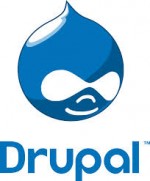
It is a free and open-source content management framework written in PHP and distributed under the GNU General Public License. Drupal is used as a back-end framework for at least 2.1% of all websites worldwide ranging from personal blogs to corporate, political, and government sites including whitehouse.gov and data.gov.uk. It is also used for knowledge management and business collaboration.
The standard release of Drupal, known as Drupal core, contains basic features common to content management systems. These include user account registration and maintenance, menu management, RSS feeds, taxonomy, page layout customization, and system administration. The Drupal core installation can be used as a simple website, a single- or multi-user blog, an Internet forum, or a community website providing for user-generated content.
The features module enables the capture and management of features in Drupal. A feature is a collection of Drupal entities which taken together satisfy a certain use-case.
Features provides a UI and API for taking different site building components from modules with exportables and bundling them together in a single feature module. A feature module is like any other Drupal module except that it declares its components (e.g. views, contexts, CCK fields, etc.) in its .info file so that it can be checked, updated, or reverted programmatically.
Examples of features might be:
- A blog
- A pressroom
- An image gallery
- An e-commerce t-shirt store
Drupal offers a sophisitcated set of content management features, all of which are available through a web based administrative interface.
Web Based Publishing : It helps to publish information online in a variety of formats using a rich text editor, similar to a word processor. No coding required!
Blocks : Publish content to self-contained regions throughout your web site, and control their visibility based on the URL path.
Contact Forms : Deploy interactive forms to collect information from users, and generate reports on submissions in Excel and other formats.
Template System : Ensure a consistent presentation of content using Drupal’s template and theming system.
Taxonomy and Classification Features : Tag content for easy classification, and organize information into sections based on assigned tags.
Administrator Defined Content Types : Define simple or complex content types through a web based interface.
Complex Page Layouts : It helps to create multi-column, multi-row layouts for presenting information, and deploy dynamic content within pre-defined regions on each page.
Views : Segment content according to characteristic properties using a web based interface, and display information in different forms throughout your site.
Workflows : Implement approval workflows for content publication, ensuring information is properly reviewed before going live.
Revision Control : Store copies of content when updating, and revert back to previous versions through a point and click interface.
RSS FeedsAdminister and deploy RSS feeds of any type of content contained in your website.
PaginationPaginate large documents contained in your site for readability and ease of use.
Geocoded ContentGeocode content using street addresses to tie it to specific locations.
Most Popular / Most Commented ContentAutomatically display links to the most popular information in your site.
Printer Friendly PagesProvide users with printer friendly pages clearly labelled with your own branding.
For more details visit https://drupal.org/ and download it.
